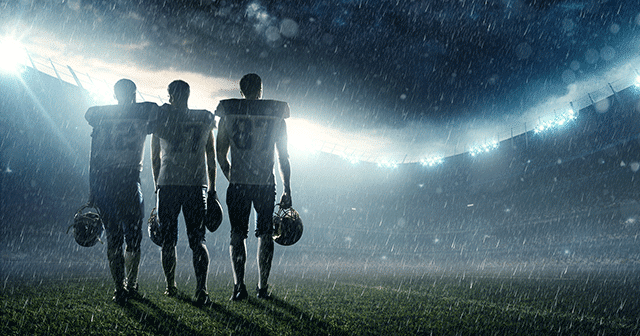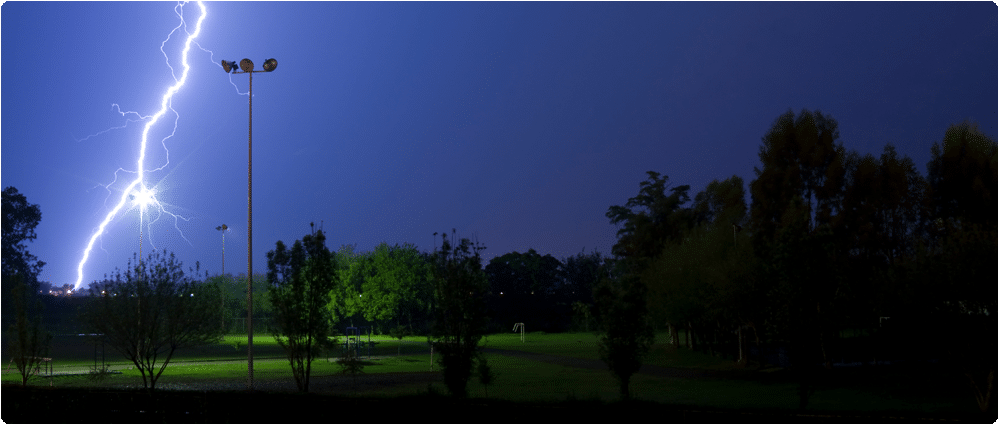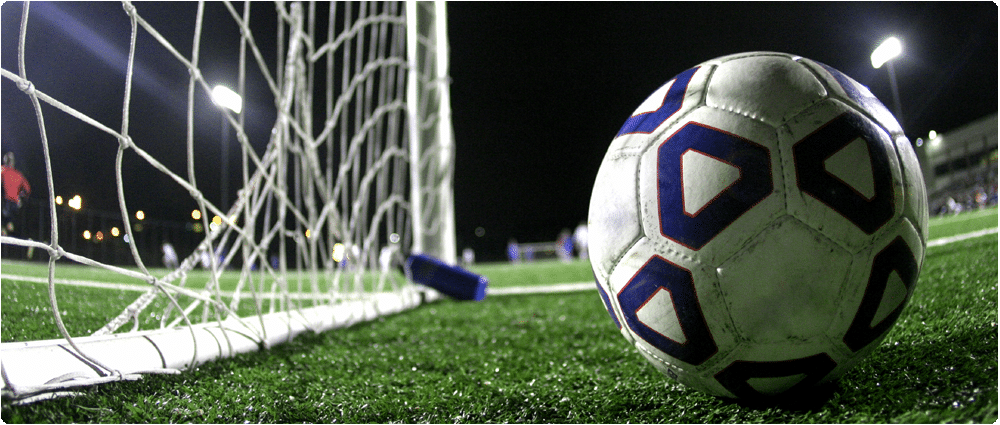Severe Weather Safety For Outdoor Sport Events

Outdoor sports seasons are a crucial part of our communities, especially when the growing pandemic concerns mandate outdoor activities over indoor gatherings. Severe weather safety for sports and rec depends on the most accurate weather forecasting available.
DTN is a premier weather forecasting and weather data company. Our innovation, integrity, and collaboration help your organization leverage up-to-the-minute, laser-focused weather data for safer, more enjoyable, and lucrative sports seasons.
Contact us to discover how our systems can help you play all your games under clear skies and fair winds.

Outdoor Sports Headache #1: Lightning
If you’ve wondered how lightning occurs, here’s a quick primer:
- When we hear thunder, we think of lightning. Lightning happens inside thunderstorm clouds. Within the storm system, warm air at the bottoms of clouds collides and mixes with cold air dropping from the top of the clouds. The warmer air carries water droplets as it ascends, and the cooler air has ice and hail particles down from higher and colder altitudes.
- The mixing water droplets and ice particles form a soft hail clump, or “graupel.” Graupels continue to smash into more water droplets and ice particles, which produces an electron “sheer” to gather in larger numbers on rising particles and fall off falling particles. When enough electrons change places, a storm cloud has a positively charged “top” and a negatively charged “bottom.”
- Further charge separation results in regional pools of positive and negative charges within the cloud. The atmosphere surrounding the storm clouds helps to inhibit the electrical charge created by the charge differential. When charges between the cloud tops and bottoms reach a threshold level, the cloud’s electrical field strength overcomes the surrounding atmospheric buffering capabilities. Lightning bolts develop mainly within clouds (about 75-80% of the time) once the charge threshold is reached.
- Meanwhile, the ground also carries a positive charge. As a thunderstorm moves over the positively charged ground, the negative charge pool at the bottom of the cloud creates a charge differential. When the difference in charges reaches the “right” threshold (higher than the intra-cloud field), a negative charge stream (called a stepped leader) reaches out to the positively-charged ground. Since positive charges can travel up trees, people, buildings, or other structures, they are more likely to get struck by lightning since they are closer to the stepped leader.
- Stepped leaders, by the way, remain invisible to the human eye. The visible lightning bolt we see results from the positive charge stream from the ground or an object meeting the negative stepped leader. We can see multiple lightning flashes if the charge remains high enough to send several streams through the same established pathway.
You’ll want to leverage as much knowledge and data as possible to avoid a lightning strike while players, coaches, and spectators are outside playing golf, baseball, football, or soccer. Accurate data also helps you formulate reliable lightning safety plans during severe weather for outdoor sports and rec.
Lightning Patterns And What They Teach Us About Severe Weather
Thankfully, lightning strikes that tag humans are rare, occurring once out of every 1,190,000 times. Still, you don’t want any of your staff, coaches, players, or spectators to be that unlucky person when you can prevent the danger.
About 75% of deaths by lightning occur from May through September, at the height of spring, summer, and fall sports seasons. Further, 4:00- 8:00 PM is the most vulnerable time of day for lightning strikes, which coincides with many game times.
Since it’s impossible to schedule all your games or tee times when lightning isn’t a factor, it’s crucial to have reliable forecasting and warning technology in place. Plus, weather forecasting technology has come a long way since reading the weekly weather report or watching your local news.
Many sports and rec organizations and golf courses have safety requirements to suspend or cancel games when lightning strikes within 8 miles of the game location. Though required stop times differ for each league or course, suspending play is the norm (and the safest solution).

Other Severe Weather Threats For Sports And Rec Programs
Yes, lightning is a major concern in outdoor sports. Heat and humidity can also endanger players and fans on the field. In extreme heat and high humidity, evaporation is slowed and the body must work extra hard to maintain a normal temperature. Despite their level of physical fitness, for athletes engaged in physical activity, the risks are magnified.
Wet bulb globe temperature is a composite temperature indicator used to determine the true impact of hot weather on people. It is a more comprehensive and reliable measure of the impact on the human body than the heat index or “feels-like factor’. More accurate monitoring of weather conditions on clear days can reduce risk and increase productive and enjoyable field time for fans and players.
Leverage Technology For Severe Weather Safety For Outdoor Sports And Rec
With the right technology solutions in place, you can track severe weather patterns precisely over your playing field. Having access to on-site meteorologists that can follow all above-field and incoming weather conditions means you can precisely and accurately schedule games, tee times, and practices for maximal player up-time.
During the big game, you can also gain access to real-time weather forecasting as your match proceeds.
Integrated weather data technology platforms help you stay ahead of the severe weather safety curve while lowering your liability risk and increasing your playing time. Here’s how that could work for your sports and rec organization during severe weather.
Installing smart sirens at your location connects immediate weather forecasting with automated siren alerts. In other words, the siren connects seamlessly to the forecast data.
Having access to a superior network of wet bulb globe temperature (WBGT) forecasts can help you stay on top of concerning elements like heat and humidity.
(WBGT forecasts detail how elements like heat, sunlight, humidity, wind speed, and cloud cover affect an athlete during exertion. It’s crucial information to have during practice time and game days.)
Also, have a shelter plan in place. There should always be a place where spectators and players can find safe shelter in the case of severe weather during sports and rec events. It is the responsibility of coaches and leaders to know the location to direct the crowd in the case of an emergency.

DTN Lets You Keep Your Eyes On The Win
Partnering with DTN for a successful outdoor sports season is the clear choice for severe weather safety for outdoor sports and rec. With a wide variety of weather forecasting and data solutions available, we customize your strategy to any size outdoor sports and rec operation.
Contact us today. We’ll be in touch expediently with customized weather data solutions you can trust. You’ll discover how leveraging the most accurate weather data in the industry can help you have winning seasons for player, staff, and spectator safety at your fingertips.










 Comprehensive weather insights help safeguard your operations and drive confident decisions to make everyday mining operations as safe and efficient as possible.
Comprehensive weather insights help safeguard your operations and drive confident decisions to make everyday mining operations as safe and efficient as possible.

